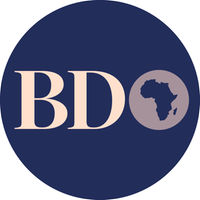
The Central Bank of Kenya head office. file photo | nmg
Summary
- Central Bank of Kenya (CBK) data shows that a third of the new loans of Sh84.6 billion issued by commercial banks between July and October used household goods, live animals and office equipment as collateral.
- The Movable Property Security Rights Act 2017 has enabled banks to diversify collateral from the tradition of using immovable assets — primarily land and buildings — which are beyond the reach of most Kenyans.
- The Sh26.8 billion was more than the Sh1.7 billion was worth of loans extended using movable securities during the lockdown period of April to May, underlining the bankers’ growing comfort accepting household goods and office equipment as collateral.
Cash-strapped Kenyans increasingly used household goods, livestock and office equipment to borrow Sh26.8 billion from commercial banks in the four months that followed the phased reopening of the economy in July when individuals and businesses were starved of credit.
Central Bank of Kenya (CBK) data shows that a third of the new loans of Sh84.6 billion issued by commercial banks between July and October used household goods, live animals and office equipment as collateral.
The Movable Property Security Rights Act 2017 has enabled banks to diversify collateral from the tradition of using immovable assets — primarily land and buildings — which are beyond the reach of most Kenyans.
The Sh26.8 billion was more than the Sh1.7 billion was worth of loans extended using movable securities during the lockdown period of April to May, underlining the bankers’ growing comfort accepting household goods and office equipment as collateral.
This jump in borrowing came in a period when more firms resumed operations after the easing of some restrictions imposed to stem the spread of Covid-19.
Many small traders like barbershops, hotels and pubs, which had to close under coronavirus containment measures, turned to bank credits.
But banks have been hesitant to lend to the small businesses on the strength of their cash flow or rely on workers’ payslips to offer credit in an economic setting engulfed by layoffs and pay cuts.
This forced many of the small traders and workers to offer office equipment and household goods for loans.
“Most of them do not have land, and so they collateralise the assets such as office equipment, the computers and furniture that they have. This is what we are seeing today,” said Robert Nyamu, a partner at consulting firm Ernst & Young.
Kenya, which has 97, 127 confirmed cases of the Covid-19 and 1, 690 fatalities so far, started the gradual re-opening its economy in July.
The country’s economy shrank by 5.7 percent in the three months to June last year, its first quarterly contraction since the global financial crisis 12 years ago, as the pandemic shut businesses and kept people at home.
The economic fallout brought by the coronavirus has made SMEs’ financial position even more precarious given that bank see the as presenting more risk of default than large firms.
Growth in loans for movable assets following the reopening of the economy was the fastest at 10.57 percent.
Household loans, which are mainly based on pay slips, grew at 3.4 percent (Sh15.4 billion), real estate 1.39 percent or Sh5.5 billion and agriculture 4.7 percent or Sh4.2 billion.
Bankers also link the jump to the creation of an electronic registry under the movable property law, which allows lenders to track properties used for loans as well as lay claim to the assets.
“The moveable assets register sort of brought into the pool additional possibilities for collateral beyond what was initially there (land and buildings as well as motor vehicles’ logbooks),” Kenya Bankers Association (KBA) chief executive Habil Olaka said earlier.
Borrowers can use movable assets they already own or banks can finance the purchase of the property for their listing at the registry.
The law and regulations created a single electronic registry for movable assets used as security for bank loans, which makes it easier for borrowers who do not own land or buildings to also access loans on strength of the movable properties.
Initially, ownership of collateral in the form of movable assets could easily be transferred without a bank’s knowledge, leaving it exposed in case of a default.
Banks have traditionally not accepted movable assets as collateral for loans because of lack of a central database they could log into and make a claim on an asset attached to a loan.
Household items, motor vehicles, furniture, office equipment, livestock, crops, stocks, intellectual property such as signed contracts by artistes, and inventory are some of the moveable assets that have been embraced by banks as collateral for loans, says a CBK-backed study.
Borrowers are required to register their collateral on the eCitizen online platform, under the business registration service.
Banks then use the collateral registry to determine the risk profile and subsequent facility for which a client qualifies.
The lenders advance loans of lower than the value of the asset, allowing them to recoup their cash on repossession of the property in the event of a default. The borrower, therefore, pays part of the cost of acquiring the asset.
The rise in use of household goods and office equipment as security comes in a period when corporate Kenya has witnessed losses that have ushered in job cuts, freezes in hiring and near-stagnant wages in the race to protect profit margins.





No comments :
Post a Comment